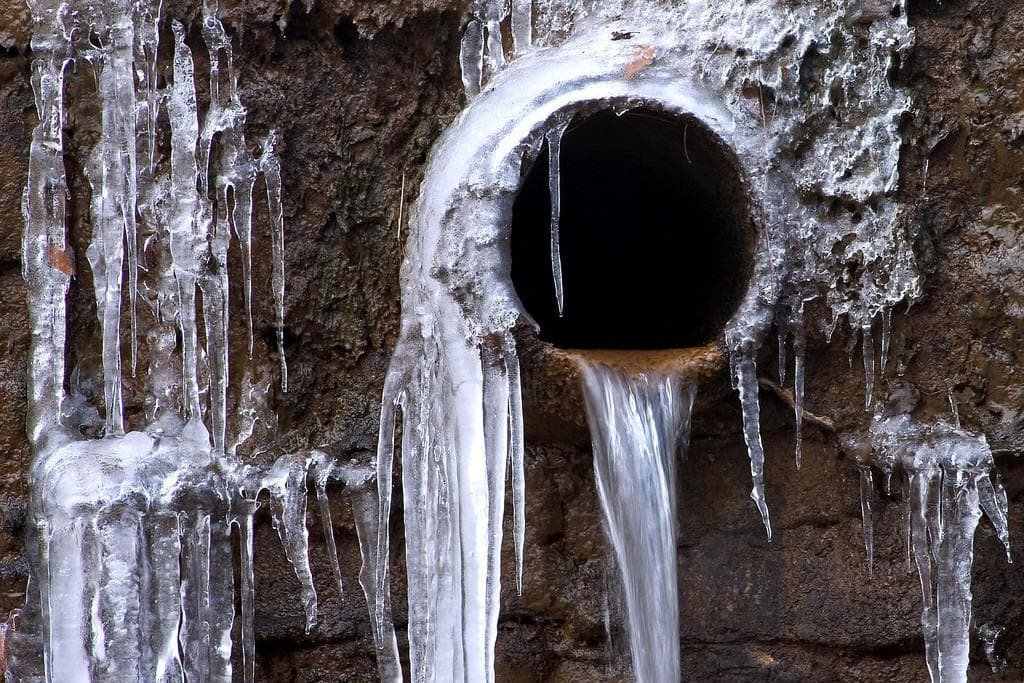Protecting Your Pipes from Freezing: Top Strategies
Protecting Your Pipes from Freezing: Top Strategies
Blog Article
Listed here underneath you'll find more high-quality insight concerning How to Prevent Your Pipes From Freezing.
:strip_icc()/snow-outdoor-faucet-pipes-4af65d1e5e904fb1aa7bf74071fe5d89.jpg)
Cold weather can damage your plumbing, especially by freezing pipelines. Below's exactly how to prevent it from occurring and what to do if it does.
Intro
As temperature levels drop, the threat of icy pipelines boosts, possibly causing costly repairs and water damage. Understanding just how to stop icy pipelines is vital for home owners in cool environments.
Prevention Tips
Insulating at risk pipelines
Cover pipelines in insulation sleeves or use heat tape to shield them from freezing temperatures. Focus on pipelines in unheated or outside areas of the home.
Home heating techniques
Maintain interior rooms effectively heated, specifically areas with pipes. Open cupboard doors to enable warm air to circulate around pipelines under sinks.
Just how to determine frozen pipes
Seek reduced water circulation from faucets, unusual smells or noises from pipes, and noticeable frost on subjected pipes.
Long-Term Solutions
Architectural modifications
Consider rerouting pipelines away from outside walls or unheated locations. Add added insulation to attics, cellars, and crawl spaces.
Upgrading insulation
Buy top quality insulation for pipelines, attics, and wall surfaces. Proper insulation assists keep consistent temperature levels and reduces the danger of icy pipelines.
Safeguarding Exterior Pipes
Garden pipes and exterior faucets
Disconnect and drain garden pipes prior to winter. Set up frost-proof faucets or cover outdoor faucets with insulated caps.
Recognizing Frozen Pipes
What causes pipelines to freeze?
Pipes freeze when subjected to temperature levels below 32 ° F (0 ° C) for extended periods. As water inside the pipelines ices up, it increases, putting pressure on the pipe walls and potentially triggering them to rupture.
Dangers and problems
Icy pipelines can bring about water supply disruptions, residential property damages, and costly repair services. Burst pipelines can flooding homes and cause considerable structural damage.
Signs of Frozen Water Lines
Recognizing icy pipelines early can stop them from bursting.
What to Do If Your Pipelines Freeze
Immediate activities to take
If you believe icy pipelines, keep faucets open to alleviate stress as the ice thaws. Utilize a hairdryer or towels soaked in hot water to thaw pipelines gradually.
Final thought
Stopping frozen pipes needs positive procedures and quick responses. By understanding the reasons, indications, and preventive measures, house owners can shield their pipes during cold weather.
6 Proven Ways to Prevent Frozen Pipes and Protect Your Home
Disconnect and Drain Garden Hoses
Before winter arrives, start by disconnecting your garden hoses and draining any remaining water. Close the shut-off valves that supply outdoor hose bibs and leave the outdoor faucet open to allow any residual water to drain. For extra protection, consider using faucet covers throughout the colder months. It’s also important to drain water from any sprinkler supply lines following the manufacturer’s directions.
Insulate Exposed Pipes
Insulating your pipes is an effective way to prevent freezing. Pipe insulation is readily available at home improvement stores and is relatively inexpensive. Pay close attention to pipes in unheated areas such as the attic, basement, crawl spaces, or garage. Apply foam insulation generously to create a buffer against the cold. You can also wrap your pipes in heat tape or thermostat-controlled heat cables for added warmth.
Seal Air Leaks
Inspect your home for any cracks or openings that could let in cold air. Seal any holes around the piping in interior or exterior walls, as well as the sill plates where your home rests on its foundation. Additionally, make sure to keep your garage door closed unless you’re entering or exiting. Leaving it open creates a significant air leak that can lead to frozen pipes.
Allow Warm Air Circulation
During cold snaps, it’s essential to allow warm air to circulate evenly throughout your home. Leave interior doors ajar to promote better airflow. Open kitchen and bathroom cabinets to help distribute heat consistently around the rooms. If you have small children or pets, be sure to remove any household chemicals or potentially harmful cleaners from open cabinets for safety.
Let Faucets Drip
A small trickle of water can make a big difference in preventing ice formation inside your pipes. When temperatures drop significantly, start a drip of water from all faucets served by exposed pipes. This continuous flow helps prevent the water from freezing. Additionally, running a few faucets slightly can relieve pressure inside the pipes, reducing the chances of a rupture if the water inside does freeze.
https://choateshvac.com/6-proven-ways-to-prevent-frozen-pipes-and-protect-your-home/

We were made aware of that write-up on Helpful Tips to Prevent Frozen Pipes this Winter through a friend on our other website. In case you enjoyed our blog posting if you please make sure you remember to pass it around. Many thanks for your time. Come back soon.
Call Today Report this page